61 “James Alley Blues” by Richard (Rabbit) Brown
13February 9, 2012 by gadaya
 Recorded in New Orleans in 1927, Richard (Rabbit) Brown was a songster, a black folk singer and musician, often itinerant, busking on street corners and working as a boatman on Lake Pontchartrain. He grew up in the late 19th century on Jane Alley (or Jane’s Alley, as the residents called it), the turpentine distillery district of New Orleans. Louis Armstrong grew up in the same neighborhood, a rough and dangerous one by all accounts. From the sides he recorded in 1927, we can assume that his repertory was a mix of Minstrel-type and pop songs (Never let the same bee stings you twice, I’m not Jealous), ballads about contemporary events (The Sinking of the Titanic, Mystery of the Dunbar’s Child) and proto-Blues (James Alley Blues). Harry Smith said in his notes that Brown was one of the earliest musician to learn the twelve bar-Blues cord pattern and the most important (and maybe the only one, during this time)New-Orleans folk singer to record. He was accompanying his singing with a rough, vibrant and slapping guitar style that fits well with his deep and gritty voice.
Recorded in New Orleans in 1927, Richard (Rabbit) Brown was a songster, a black folk singer and musician, often itinerant, busking on street corners and working as a boatman on Lake Pontchartrain. He grew up in the late 19th century on Jane Alley (or Jane’s Alley, as the residents called it), the turpentine distillery district of New Orleans. Louis Armstrong grew up in the same neighborhood, a rough and dangerous one by all accounts. From the sides he recorded in 1927, we can assume that his repertory was a mix of Minstrel-type and pop songs (Never let the same bee stings you twice, I’m not Jealous), ballads about contemporary events (The Sinking of the Titanic, Mystery of the Dunbar’s Child) and proto-Blues (James Alley Blues). Harry Smith said in his notes that Brown was one of the earliest musician to learn the twelve bar-Blues cord pattern and the most important (and maybe the only one, during this time)New-Orleans folk singer to record. He was accompanying his singing with a rough, vibrant and slapping guitar style that fits well with his deep and gritty voice.
-Here are his five remained recordings (one, “North Country Blues” was never released by Victor):
- James Alley Blues
- I’m Not Jealous
- Never Let The Same Bee Sting You Twice
- Mystery Of The Dunbar’s Child
- Sinking Of The Titanic
I’d like to reproduce here a fantastic essay about Richard “Rabbit“ Brown by Kevin Fontenot:
TIMES AIN’T LIKE THEY USED TO BE:
RABBIT BROWN, NEW ORLEANS SONGSTERBy Kevin S. Fontenot
In 1900 they were everywhere. Singing on street corners, in front of circus entrances, or just moving down the dusty roads of the South, playing anywhere a crowd might be cajoled into donating a dime to the cause. To survive they played any request–ballads, popular tunes, white hillbilly music, hymns, and the newly emerged blues. Songsters were the first folk musicians to be “professional.” Southern social occasions required a wide variety of music and the songsters strived to fill the need. Essential was the ability to provide a steady dance beat, but on the street corner a sentimental number could bring forth both tears and coins. By the 1930’s, however, the songster was becoming a thing of the past, nudged out by an expanding national entertainment industry that reached into the deepest parts of the South. Most songsters faded into the past. A few waxed recordings, leaving a tempting glance into their world–and many questions.
Such is the case with Richard “Rabbit” Brown, one of the most celebrated songsters and the only one from new Orleans to record. On March 11, 1927, Brown cut six sides for the recording pioneer Ralph Peer. An interesting mix of original blues, pop covers and “event” songs, this brief catalog represents all that is known for certain about him. Where was he born? Where did he die? How did he learn to play? Why did the few fellow musicians who recall him remember him as a “clown man” who sang “all the funny kind of songs–made up songs”?1
In 1927 Richard “Rabbit” Brown was already at least middle aged. He was probably born around 1880, just as the first rumblings of Jim Crow moved across the South as the Federal army went home. The place of his birth remains a mystery. New Orleans usually receives the honor, but doubts cloud the issue. Local bluesman Ernie Vincent remarked on hearing the recording that Brown sounded like he came from north Louisiana or perhaps Mississippi. Indeed, Brown’s vocal and phrasing does show hints of a rural origin, particularly if he is compared to singers like Joe Harris and Kid West, who hailed from new Iberia and had lived near Bunkie for a while.2 Then there is Brown’s testimony in “James Alley Blues”: “Cause I was born in the country, she thinks I’m easy to rule.” Brown sings the line with a conviction that seems to indicate that his woman did think he did come from the country. A rural origin for Brown also fits the general pattern of migration of African-Americans in the late nineteenth century. Thousands moved to the city to escape sharecropping and festering racial tension which exploded at the turn of the century. Even if Brown was not born in rural Louisiana, his parents probably migrated into New Orleans shortly before his birth. The Browns would have settled in one of the “neighborhoods uptown above Canal Street.” His father may have worked as a longshoreman or in the cotton presses. His mother might have sought work as a domestic. Regardless, poverty would have dogged them and they would have had to suffer the displeasing stares of the black Creoles.3
If Brown was not born in New Orleans he was probably there by 1890 because he composed a ballad about one of the most controversial events in New Orleans history. On the night of October 15, someone shotgunned Police Superintendent David Hennessey to death on Basin Street. Accusations fell on immigrant Italians, also suspected of being members of the Mafia. When a March trial ended in acquittal for six and a retrial for three others, a lynch mob descended on the parish prison and soon eleven men were shot or hanged for the murder. The lynching caused an international incident and captured the imagination of Brown. He composed a ballad in honor of Hennessey titled “The Downfall of the Lion.” All that remains of the song is a verse recalled by guitarist Lemon Nash, who played with Brown in the 1920’s: “I’m gonna tell you racketeers, Something you can understand, Don’t let your tongues say nothin’ That your head can’t stand.”4
Brown also took note of another incident central to the lore of the New Orleans underworld. “Gyp the Blood” told the story of the murder of restauranteur and bar owner Billy Phillips by Charles Harrison (a.k.a. “Gyp the Blood”), a New York hoodlum on the lam. Harrison was employed as a waiter at the Tuxedo Dance Hall owned by Harry Parker, a former business associate of Phillips. On Easter Sunday 1913, after several altercations, Phillips went to the Tuxedo to make up with Parker. While the two drank at the bar, Harrison stepped behind Phillips and fired a shot at the unsuspecting bar owner. A gunfight ensued, resulting in the deaths of Phillips and Parker. Public outrage at the violence forced the police to close the five dance halls in Storyville and helped to convince the authorities that closing the District might be a good idea. The closing of the dance halls also limited the places of employment for musicians, some of whom later plyed the riverboats and began to move north. According to newspaper reports, no musicians were playing in the Tuxedo that night. Brown could have been there and obtained his information first-hand or he could have heard stories from other witnesses. One of those witnesses was a prostitute named Josephine Brown. Her relationship, if any, to Rabbit Brown is unknown, and, unfortunately, so is the text to “Gyp the Blood.” Brown did not record the song, and no one recalled the words.
“The Downfall of the Lion” and “Gyp the Blood” reveal several aspects of Brown’s life. First, he obviously knew the “sporting life” of New Orleans well. Second, Brown was also aware that these stories attracted great attention and people wanted to hear about crimes. Such “event songs” composed a core of the songster tradition and served as a method of disseminating some of the more sensationalistic news stories before the consolidation of the tabloid press in the 1920’s. How many event songs Brown knew is impossible to discover, but he knew at least two others. And it is known that his songs were original compositions, either dealing with local events such as the Hennessey and Tuxedo murders or one of the most important international events, the sinking of the Titanic.
The local event song that Brown chose to record recounted the 1914 kidnapping of Bobby Dunbar from a resort near Opelousas, Louisiana. Brown’s song is the only musical account of the crime, which strongly suggests that “The Mystery of the Dunbar’s Child” is a Brown original.” If “Dunbar’s Child” recounts an obscure event, “Sinking of the Titanic” tells one of the most famous disasters of all time. The underlying message of Brown’s account is the need to be prepared for disaster at any moment. “None thought of danger, or what their fate may be,” Brown sang. But “accidents may happen most any time, and we know not when an’ where.”5 Brown ends with a snippet of “Nearer My God to Thee,” falsely believed to be the last song played as the ship sank. Nevertheless, Brown proves his familiarity with religious music by performing this popular hymn.6
“Sinking of the Titanic” brought Rabbit Brown a form of recognition seldom given to a songster in his time. Abbe Niles noted the song in his music column in The Bookman for July, 1928. The entire text of the song was reproduced and a meager biography, courtesy of Ralph Peer, also accompanied the lyrics. Brown “sang to his guitar in the streets of New Orleans, and he rowed you out into Lake Pontchartrain for a fee, and sang to you as he rowed.” His work exhibited “character,” Niles said, but he was hard to understand, thus the transcription of the lyrics.7
Lemon Nash was one of the few musicians who remembered Brown. In an interview in 1959, he substantiated the portrait in Nile’s article. Brown made his money playing on the streets of New Orleans’ sporting district. He was a regular at Mama Lou’s on Lake Pontchartrain. If “business was slow and [Brown] need a ride home, he would turn in a false fire alarm.” The firemen answered the call and found out it was only their friend, who sang to them as they went back to the station. “He knew all the firemen,” Nash recalled, and they did not seem to mind the inconvenience.
For Nash, Brown seems to have been a comic figure with little musical talent. He “played so badly, I had to let him go,” Nash remembered. “He just hit the guitar and yell.” Brown was “what you call a clown man.”8 Clarence “Little Dad” Vincent’s remark that Brown played “funny kind of songs” seems to reinforce Nash’s negative comments. Brown’s recordings, however, cast doubt on the validity of Nash’s opinion. They reveal a seasoned player capable of dexterity and deep expression,and in the gravelly voice, perhaps the faint origins of the New Orleans vocal growl may be heard.
Young Louis Armstrong may have heard Rabbit Brown because the two lived in the same neighborhood. Jane Alley, where Louis was born and Brown kept his main residences, lay in the “very heart of what is called ‘The Battlefield’ because the toughest characters in town used to live there, and would shoot and fight so much,” Armstrong wrote in his autobiography.9 In such a rough and tumble atmosphere, Brown needed to be tough and wily himself and may have supplemented his singing income with money from other, more questionable, activities.
That may account for some of Nash’s negative comments about Brown’s singing and playing. But more subtle reasons probably explain Nash’s resentment. Perhaps Nash envied the older man’s skill at hustling and singing. But style seems to be the main issue. Brown was a “clown man,” which may mean that he “put on” or “Tommed” for white people. For a man who witnessed the tightening of Jim Crow and the rash of lynchings in the early years of the twentieth century, proper deference to whites constituted a survival tactic. Younger musicians, unable to openly criticize the system, may have displaced their disdain onto an older man who represented what they feared the most. Regardless, Brown was a survivor who carefully cultivated relationships with white firemen and the conductors of excursion trains. Brown, to paraphrase a well worn blues line, laughed to keep from crying, and he survived.
On March 11, 1927, Brown secured his place in history. With Ralph Peer watching, he waxed six sides, excellent performances that only hint at his talent and wide repertoire. “James Alley Blues” was a semi-autobiographical excursion into his personal relations. “Dunbar’s Child” and “Sinking of the Titanic” illustrated his ballad composing ability and a sense of what people wanted to hear. “I’m Not Jealous” and “Never Let the Same Bee Sting You Twice” revealed a debt to popular published music, though the latter bore no lyrical resemblance to Cecil Mack and Chris Smith’s song of the same name. Victor Records never released “Great Northern Blues,” so what treasure it held may never be known. After the session Rabbit Brown collected his fee and walked into the mists of history. Some authorities report that Richard “Rabbit” Brown died impoverished in 1937, but this has not been confirmed. “Richard Browns” died with regularity in New Orleans between 1927 and 1937. Brown may not have died in the Crescent City. Lemon Nash recalled that Brown had nephew in Chicago. Perhaps he went to Chicago and played on Maxwell Street. Or maybe he visited relatives in rural Louisiana. He might have got religion as he aged and turned to the church. Wherever Rabbit Brown ended up, he still beckons from a distant time, a time that “ain’t like it used to be.”
ENDNOTES
1. Lemon Nash interviewed by Richard B. Allen, William Russell, and Harry Oster, October 3, 1959, New Orleans, and Clarence “Little Dad” Vincent interviewed by Richard B. Allen, November 17, 1959, New Orleans, both in Hogan Jazz Archive, Tulane University.
2. See John Cowley’s notes to I Can Eagle Rock: Jook Joints from Alabama and Louisiana, 1940-1941, Travelin’ Man TM CD 09. This compact disc includes the complete recordings of West and Harris made for John A. Lomax.
3. Quote from Joy Jackson, New Orleans in the Gilded Age, 2nd ed. (Lafayette: Louisiana Historical Association, 1997), p. 187. Jackson provides an excellent overview of African-American life in New Orleans during the period.
4. Note by Richard B. Allen in the Richard “Rabbit” Brown Persons vertical file, Hogan Jazz Archive.
5. Richard “Rabbit” Brown, “Sinking of the Titanic,” on The Greatest Songsters, Document Records DOCD-503, which includes his complete recordings with the exception of “Great Northern Blues,” which seems to be lost. For an overview of the songster tradition, see Paul Oliver, Songsters and Saints (Cambridge: Cambridge University Press, 1984), pp.20-23.
6. The last song played on the Titanic was probably “Songe d’Automne.” For an excellent discussion of the Titanic’s impact on popular culture, see Steven Biel, Down With the Old Canoe: A Cultural History of the Titanic (New York: W. W. Norton & Company, 1996).
7. Abbe Niles, “Ballads, Songs, and Snatches,” The Bookman LXVII, no. 5 (July, 1928), 565.
8. Nash interview. Brown also played on train excursions to Baton Rouge, which suggests that he might even have been present at the picnic where Bobby Dunbar was kidnapped.
9. Louis Armstrong, Satchmo; My Life in New Orleans (New York: DaCapo Press, 1986; originally published 1954), pp.7-8.
Originally published in The Jazz Archivist 13 (1998-99): 1-6. The Jazz Archivist is a newsletter of the William Ransom Hogan Jazz Archive, Tulane University. Reprinted with permission.
The James Alley Blues Variations
“James Alley” (a corruption of Jane’s Alley) is a remarkable early Blues song that tells of the difficult relationships between two lovers from the man’s point of view (the previous Anthology track by Didier Hebert was the woman’s point of view).
Here are the great lyrics:
The times ain’t now nothin’ like they used to be.
Oh, times ain’t now nothin’ like they used to be.
And I’m tellin’ you all the truth. Whoa, take it from me.I done seen better days, but I’m puttin’ up with these.
I done seen better days, but I’m puttin’ up with these.
I could have much a better time with these girls down in New Orleans.Cause I was born in the country, she thinks I’m easy to rule.
Cause I was born in the country, she thinks I’m easy to rule.
She try to hitch me to a wagon, she wanna drive me like a mule.You know, I bought her the groceries and I pay the rent.
Yeah, I buy her the groceries and I paid the rent.
She try to make me to wash her clothes, but I got good common sense.I said, if you don’t want me, why don’t you tell me so?
You know, if you don’t want me, why don’t you tell me so?
Cause it ain’t like I’m a man that ain’t got nowhere to go.I been give you sugar for sugar, let you get salt for salt.
I give you sugar for sugar, let you get salt for salt.
And if you can’t get ‘long with me, we’ll it’s your own fault.How you want me to love you, and treat me mean?
How do you want me to love you, you keep on treatin’ me mean?
You’re my daily thought and my nightly dream.Sometime I think that you’re too sweet to die.
Sometime I think that you’re too sweet to die.
And another time I think you ought to be buried alive.
In the 1960’s, when a new generation of folk singers discovered the Anthology, “James Alley” Blues became a favorite to perform, with his catchy lyrics and simple Folk/Blues chord format. The song is still appealing today for numerous rock and folk performers and remains one of the most enduring Anthology classic.
-I’ve compiled eight versions of the song that I love, including a rare performance from Bob Dylan in the early sixties (from the “Minnesota Tapes”), before he even recorded his first lp. My favorite version is by Judy Roderick, from one of the best Folk/Blues lp of the sixties, “Woman Blue”. She called it “Born in the country” and made the song completely her own. You will notice that half of the versions here are (beautifully) sung by women who reverse the gender of the original version.
- Bob Dylan (The Minnesota Tapes)
- Judy Roderick (Woman Blue)

- Fox and Branch (Bootlegger’s Blues)
- Alice Stuart (All the Good Times)
- Jeff Tweedy (The Harry Smith Connection: A Live Tribute to the Anthology)
- Hazel Dickens & Alice Gerrard (Hazel & Alice)
- Big Moe & Jolly Jumper (Rooster Soup)
- Sweet Ginger Heat (Healy Heartache)


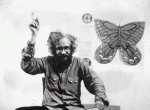
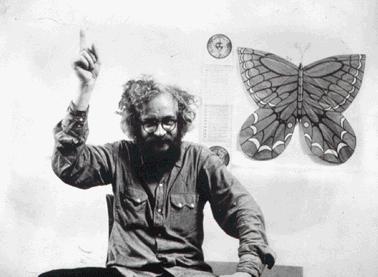







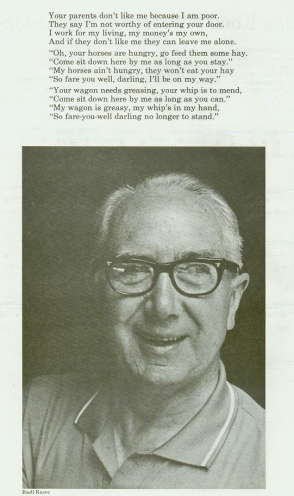
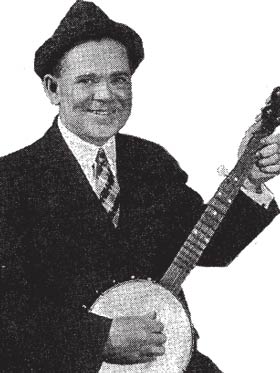
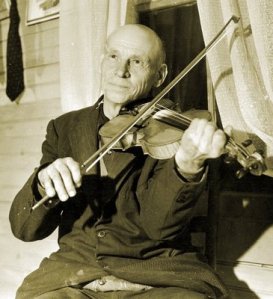


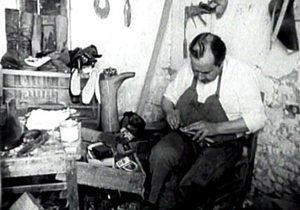
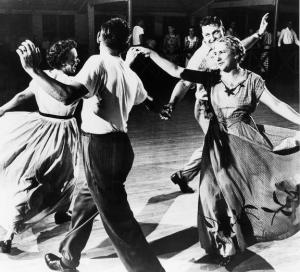
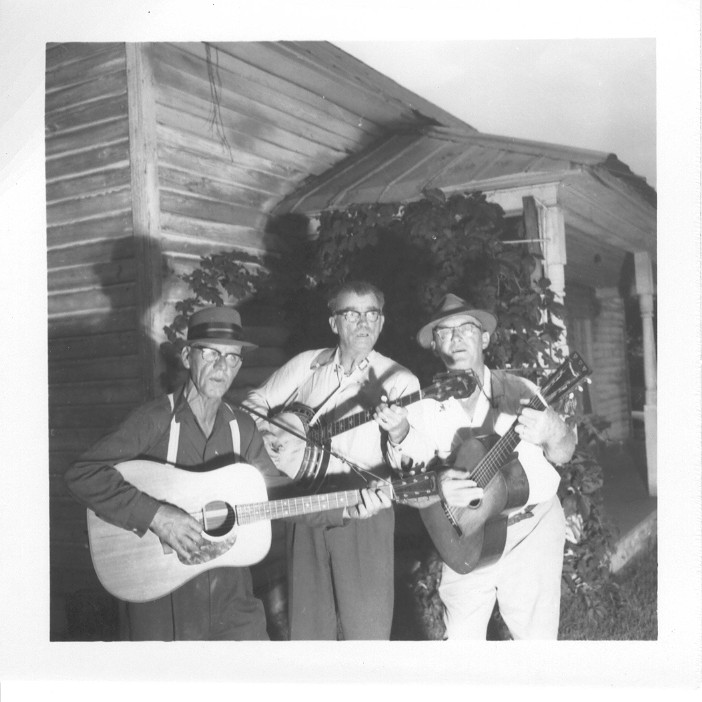



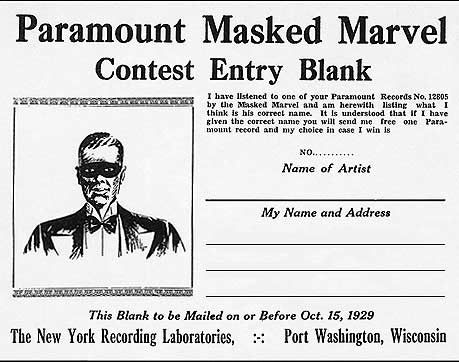

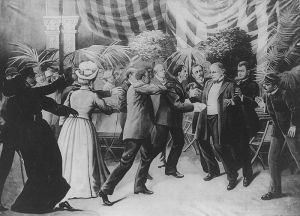





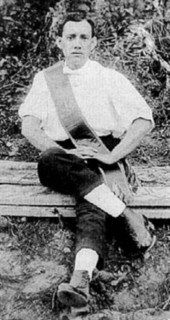
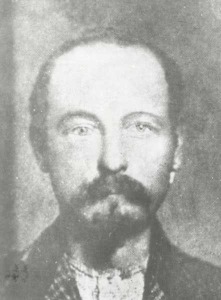
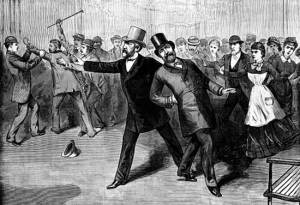
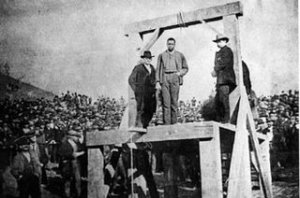
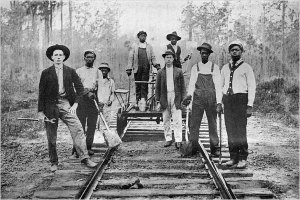

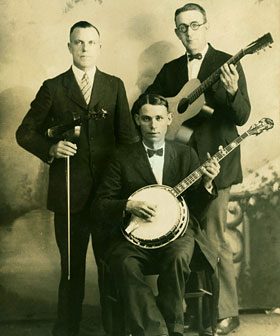





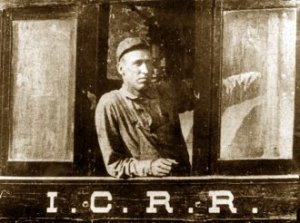





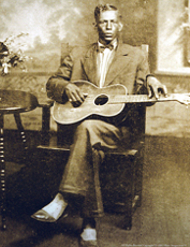
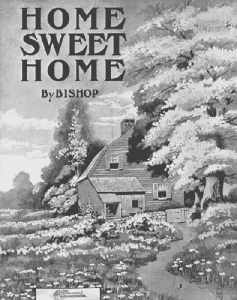



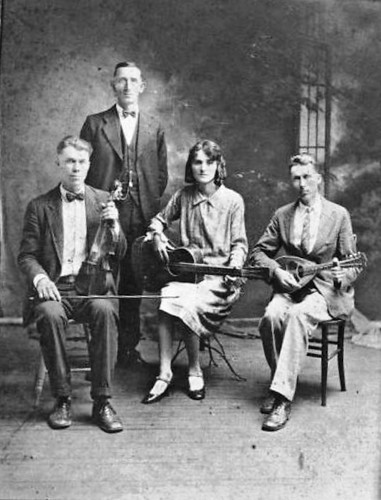




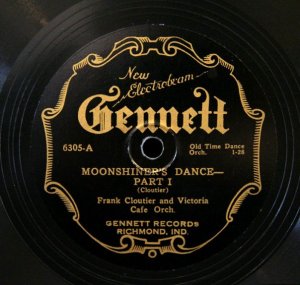











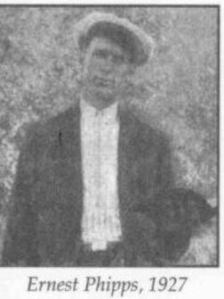






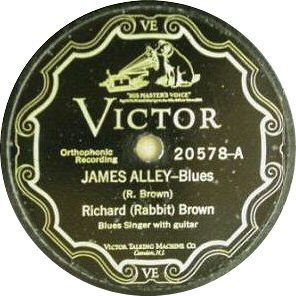
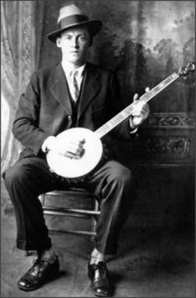


once again, a brilliant–and informative/scholarly–addition to this series. thank you. i’m appending the david johansen and the harry smiths’ version as well . . .
Thank you for this delightful piece on the delightful James Alley Blues by the strange and enigmatic Rabbit Brown …. I have loved this song since my first hearing on my folkways lp (very warped as they often were in those days) I used to have to weigh it down on the turntable in order to get it to play right. I’ve waited with excitement for this one to come up, It’s worth another encouragement to keep you going!!
Oddly enough, I was just listening to this song yesterday (I have the anthology on permanent rotation in the CD player of my car) thinking I ought to work up a version of it, and lo and behold, this blog shows up in my email this morning. Wonderfully informative, as always.
I do think, however, that both Harry Smith and you have got the last line of the second verse transcribed incorrectly. To my ears, the line is:
“I could have a much better time but these girls now they’re so hard to please.”
I love Richard Rabbit Brown (I’ve also seen it spelled Rabbitt) and especially “James Alley Blues”. iTunes has another track of his that you haven’t mentioned. “Swanee River” is on “Times Ain’t Like They Used to Be: Early American Rural Music, Vol. 2”.
It’s a mistake.Swanee River on this cd is by Fiddlin’ John Carson but there’s « James Alley Blues » just after it.
Just stumbled upon your blog. Thanks for enlightening me, and doing all the collecting of music and stories.
Thanks a lot. Fantastic songs…
I think Marc is right: ..they’re so hard to please.
Hi Ejler Svendsen
Thank you for this entry in particular on James Alley Blues, Richard (Rabbit) Brown, but also for all the rest you’ve been posting as meticulously. This is exactly what one hoped the web would be when it started up.
The mix of well informed, informing, provocative and exciting text, visuals and audio make the happenstance experience of finding this treasure trove a bit like tripping over a talking whalebone in the middle of the arctic. Heartwarming doesn’t cover it.
Heritage quilt quality heat n heart!
The opening bar or two of “Mystery Of The Dunbar’s Child” reminds me of something I’m not sure I’m hearing right. Is it the same as the opening to Louis Collins by Mississippi John Hurt, or something else? It hit me so clear when I first heard it ( just the first 6, 8 notes or so), but I can’t place it for sure. Do you know what I’m referring to, what I’m reminded of when I hear it?
Kudos and many, many thanks for your work on this blog. Long may you gear along, up hill and down, valley, plain and vista!
have fun frequently. (Cause times ain’t now, buddy like they used to be)
Hi, thanks for your nice comment. The opening notes of « Mystery of The Dunbard’s Child » are identical to Elizabeth Cotton’s Freight Train!
All the best,
Gadaya
Thanks for the interesting post about one of my favorite songs on the Anthology. The speculation about Rabbit Brown reminds me how unfortunate it is that we do not have more information about many great performers from the period. Thanks for the different versions too. Another one that I like is David Johansen’s version of “James Alley Blues.”
Hello, I’m a musician from Poland. I play traditional American songs on the streets of Cracow. Here’s link to songs that I performed 3 weeks ago at a club in Cracow: James Alley Blues and KC Blues: http://www.youtube.com/watch?v=qzlr4XMoDD4
There’s a problem with entering lyrics section at your webpage. I suppose that must be some kind of error ’cause it happens also when I use other computers. I’d be grateful if you fixe it as soon as possible ’cause this page used to be a great source of lyrics for me and I find it very useful.
Regards
Willy Blake (Przemek świerczek)
http://www.youtube.com/watch?v=h8BmaDkNRkY this is James alley blues
Thanks for the history lesson. I live in New Orleans and love the song. My favorite version is by Grayson Capps. Recorded in WWOZ’s studio – pre Katrina.